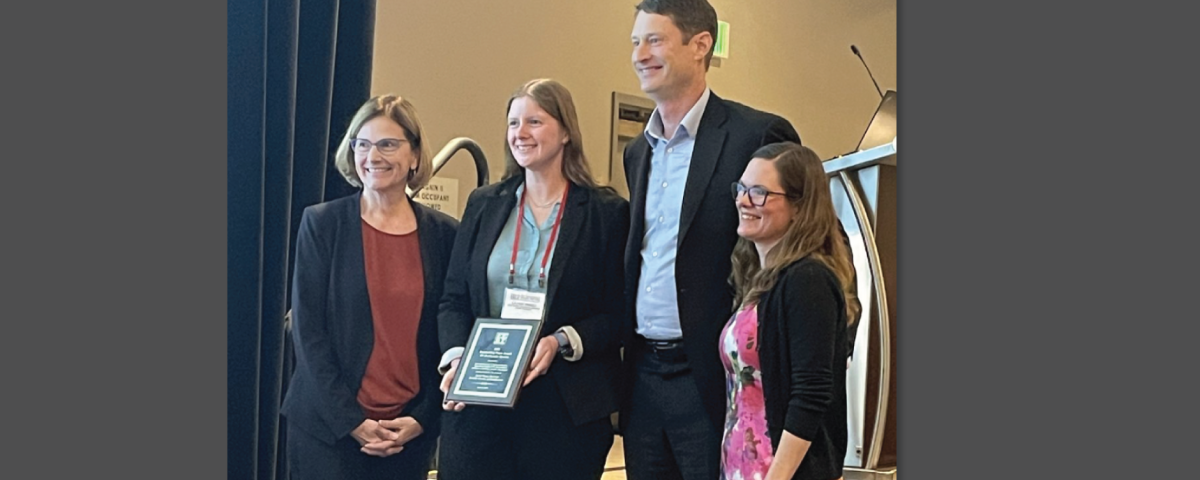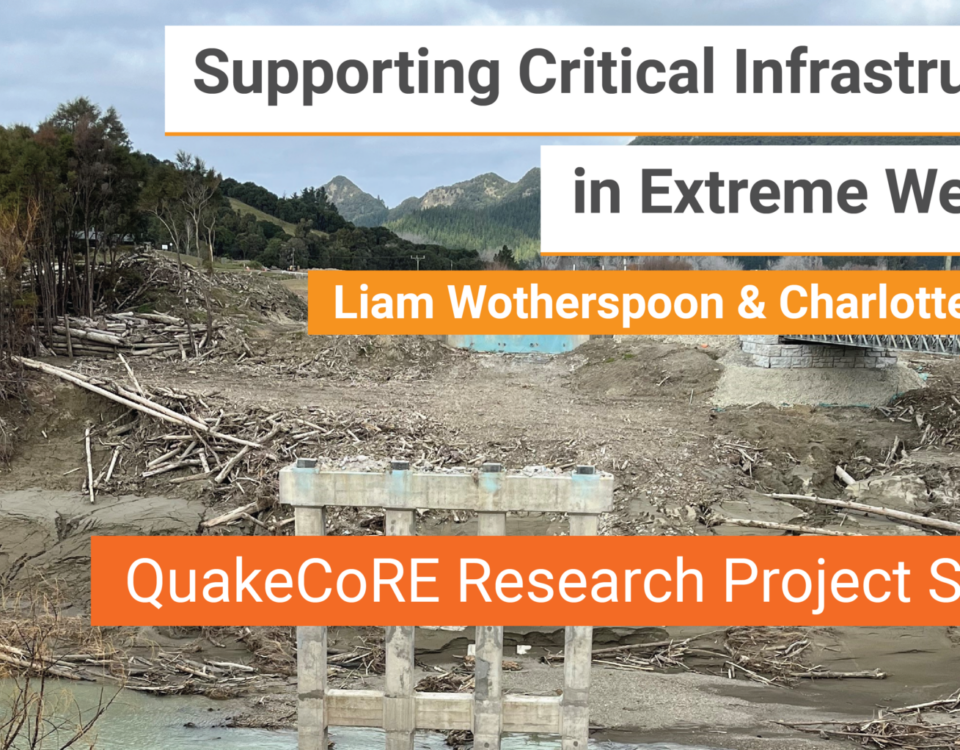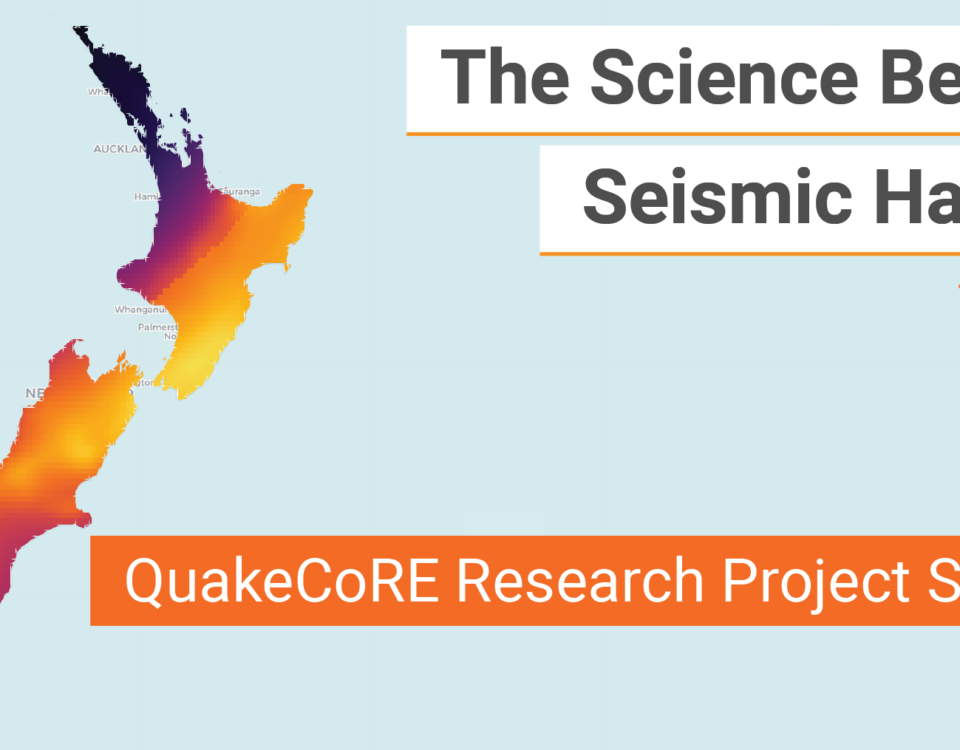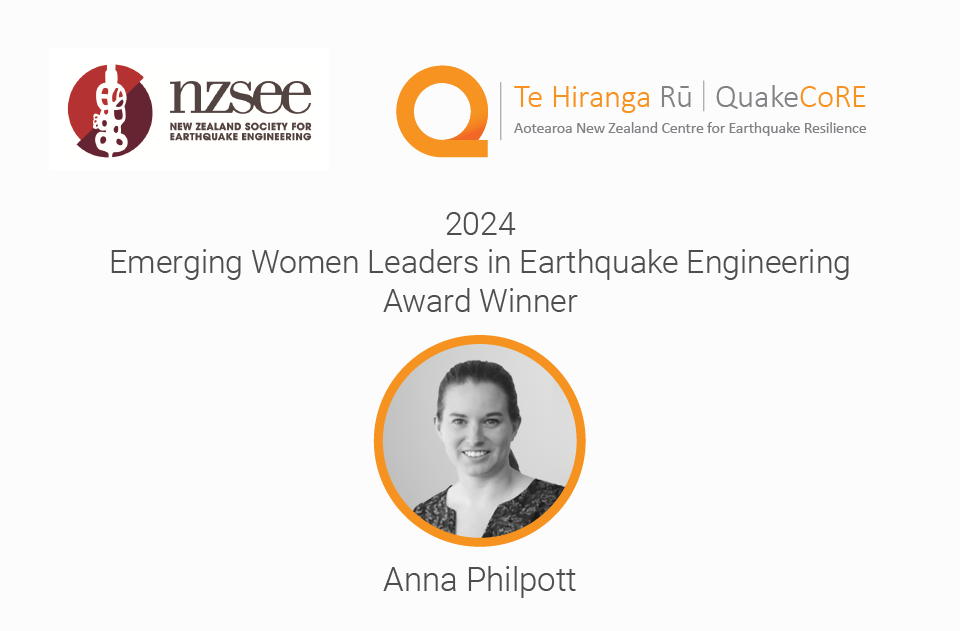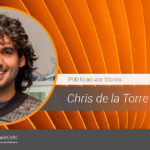
PhD Graduate Story – Chris de la Torre
March 22, 2023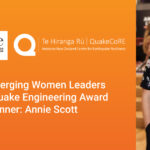
2023 NZSEE/QuakeCoRE Emerging Women Leaders in Earthquake Engineering Award Winner Annie Scott
April 25, 2023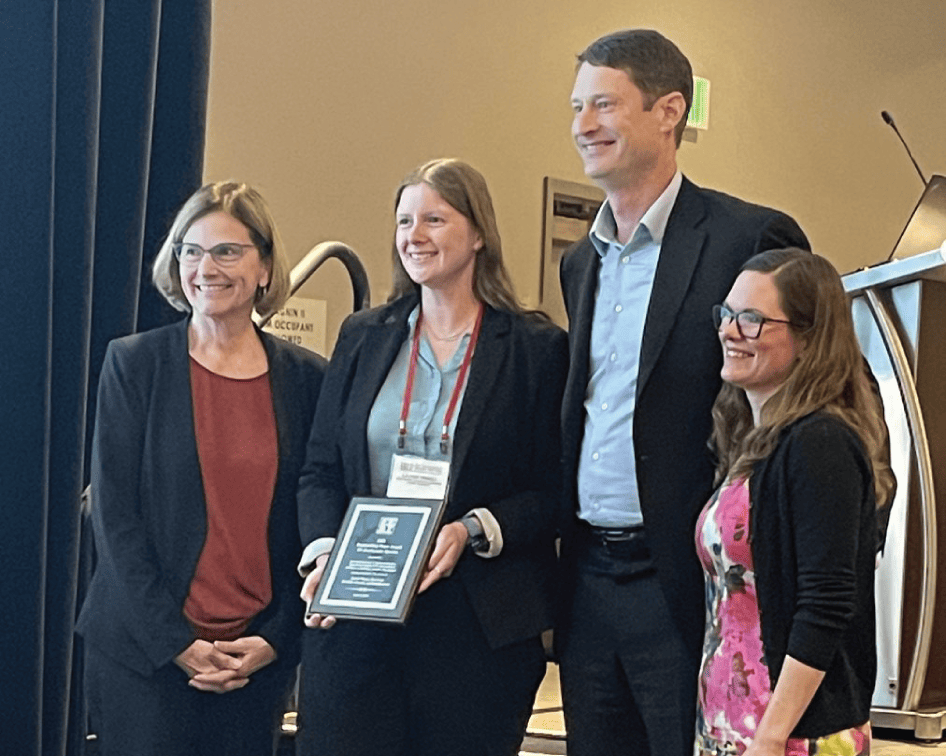
Lauren Vinnell receiving the 2022 Outstanding Paper Award at the Earthquake Engineering Research Institute (EERI) 2023 Annual Meeting in San Francisco on 12 April 2023. From left to right: Janiele Maffei (President of EERI), Lauren Vinnell, Jack Baker (Editor in Chief 'Earthquake Spectra'), Heidi Tremayne (Executive Director, 'Earthquake Spectra'). Photo credit: EERI
Te Hiranga Rū QuakeCoRE extends its congratulations to Lauren Vinnell, Piata Inch, David Johnston and Nick Horspool on the conferral of the prestigious Earthquake Engineering Research Institute (EERI) 2022 Outstanding Paper Award in San Francisco last night. Lauren and David were at the EERI 2023 Annual Meeting to receive the award on behalf of all co-authors. The Outstanding Paper Award is awarded to authors of Earthquake Spectra papers ‘judged to be outstanding contributions to earthquake hazard mitigation.’
Their paper “Behavioral responses to earthquake shaking: Video footage analysis of the 2016 Kaikōura earthquake in Wellington, Aotearoa New Zealand,” (Earthquake Spectra, Vol. 38, No. 3, pp. 1636-1660), by Lauren Vinnell, Piata Inch, David M. Johnston (M. EERI 2013), and Nick Horspool was novel in multiple ways.
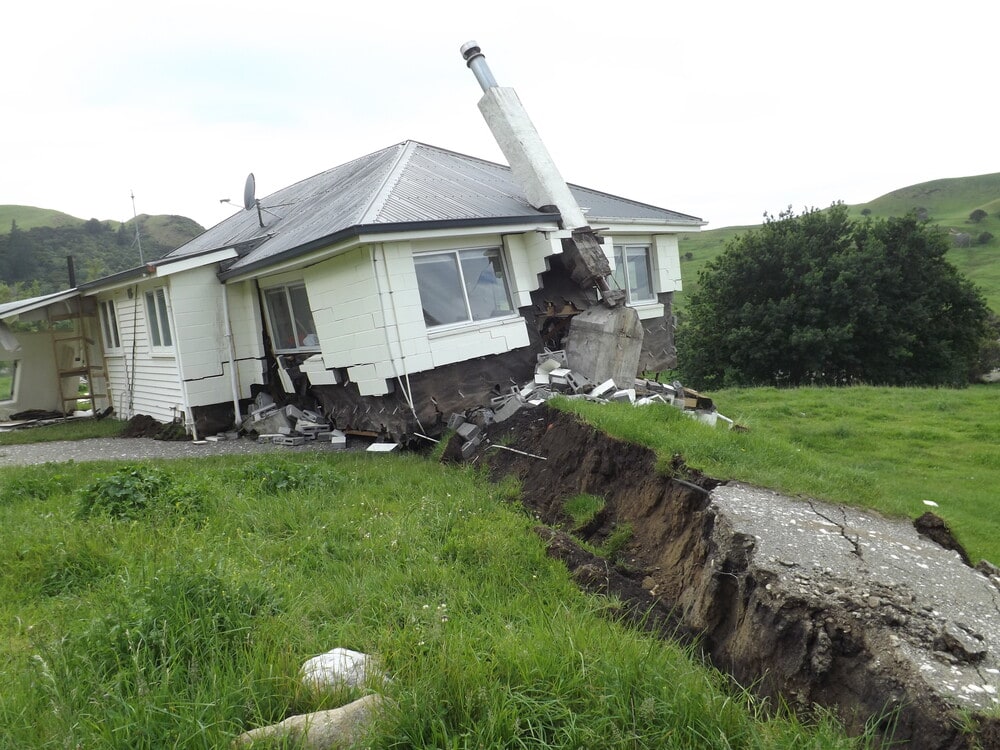
Damage to a building, that has since been demolished, following rupture on the Kekerengu Fault during the 2016 Kaikōura Earthquake. Image credit; Nicola Litchfield Toka Tū Ake EQC / GNS Science
Thanks to video footage kindly provided by the Wellington International Airport the team were able to analyse what people actually did during the 2016 Kaikōura Earthquake. This relatively new method hasn’t been used very often in the context of earthquakes but has some clear strengths that compliment other more traditional data-gathering types. Typical methods are centred around intent and reflection. Asking people what they think they’ll do in an earthquake, or retrospectively asking them to self-report on what they did do. While these two approaches can provide valuable data they have some obvious limitations. Vinnell notes “Intentions are a good predictor of behaviour but aren’t perfect, while people sometimes forget exactly what they did and why or give us what they think is the ‘right’ answer." Additionally, “video footage is more objective, so we aren’t relying on people accurately predicting or reporting their own behaviour”.
The award citation notes “Vinnell et al.’s. use of CCTV shows how detailed analysis of actual behaviour during earthquakes may inform the community to reduce the risk of injuries and fatalities through behaviour modifications.”
The video footage also provides other valuable avenues for analysis. Particularly how people respond to different aspects of the earthquake such as weak and strong shaking or environmental cues over time. This aspect coupled with how people interacted with each other during the Earthquake is the focus of another paper currently underway by the group. “In the footage, we saw people interacting with each other (people they were with as well as strangers) as they tried to work out what was happening and what they should do."
"There’s some really important findings in there to help us understand not just what people do during earthquakes but why.”
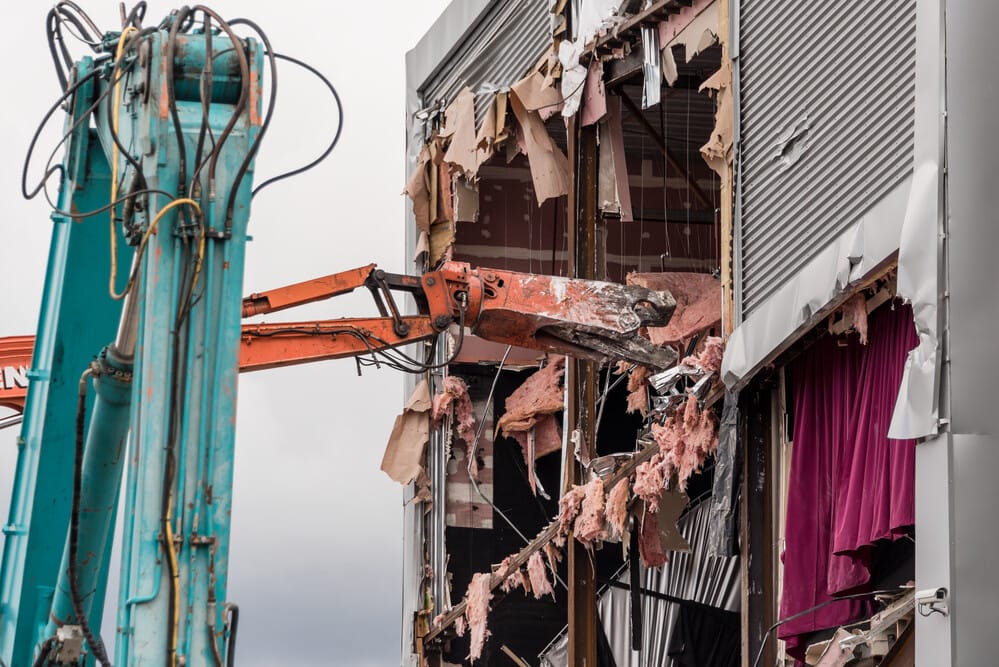
Demolition of Event Cinema, Lower Hutt due to damage from Kaikoura Earthquake 2016. Image credit: Margaret Low, GNS
The multidisciplinary authorship team is made up of:
- Lauren Vinnell, a Lecturer of Emergency Management at the Joint Centre for Disaster Research at Massey University and is focused on providing tangible recommendations for improvements to ongoing public education and communication efforts to reduce the impacts of natural hazards on communities.
- Piata Inch (Te Aitanga-a-Māhaki), a young Māori researcher who is currently a Research Officer at the Joint Centre for Disaster Research and an undergraduate law student at the University of Canterbury.
- David M. Johnston, Director and Professor of Emergency Management at the Joint Centre of Disaster Research whose research focuses on human responses to natural hazards, crisis decision-making and the role of public education and participation in building community resilience and recovery.
- Nick Horspool, a risk specialist at GNS Science with expertise in geology and seismology. Nick has had past experience in understanding how people are injured in earthquakes and provided important context about the unusual aspects of the Kaikōura Earthquake, common earthquake injuries and potential design solutions.
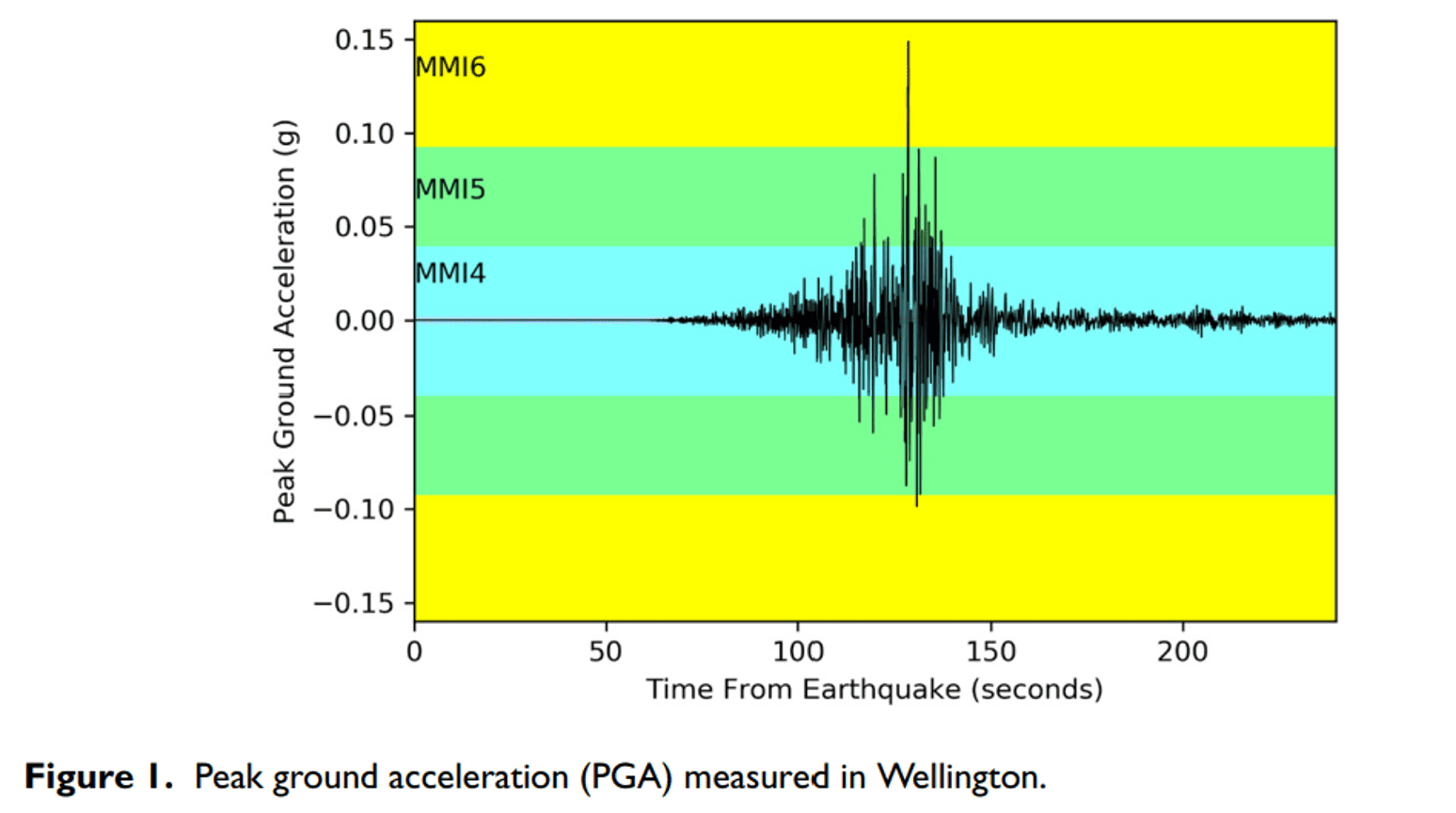
The EERI judges specifically noted the multidisciplinary nature of the paper, Vinnell elaborates that this “reflects a really exciting shift towards greater collaboration between the social and physical sciences. It’s an acknowledgement that working together can help us answer some tricky questions in ways which can benefit a large number of fields. We’re getting good at this pretty quickly in Aotearoa, so to have it acknowledged by the leading earthquake engineering organisation in the United States shows that again New Zealand research is getting noticed and having an impact globally.”
“Winning the award means a lot, particularly given most of the team are very or fairly early in our careers, so the recognition of our work is really valuable.”
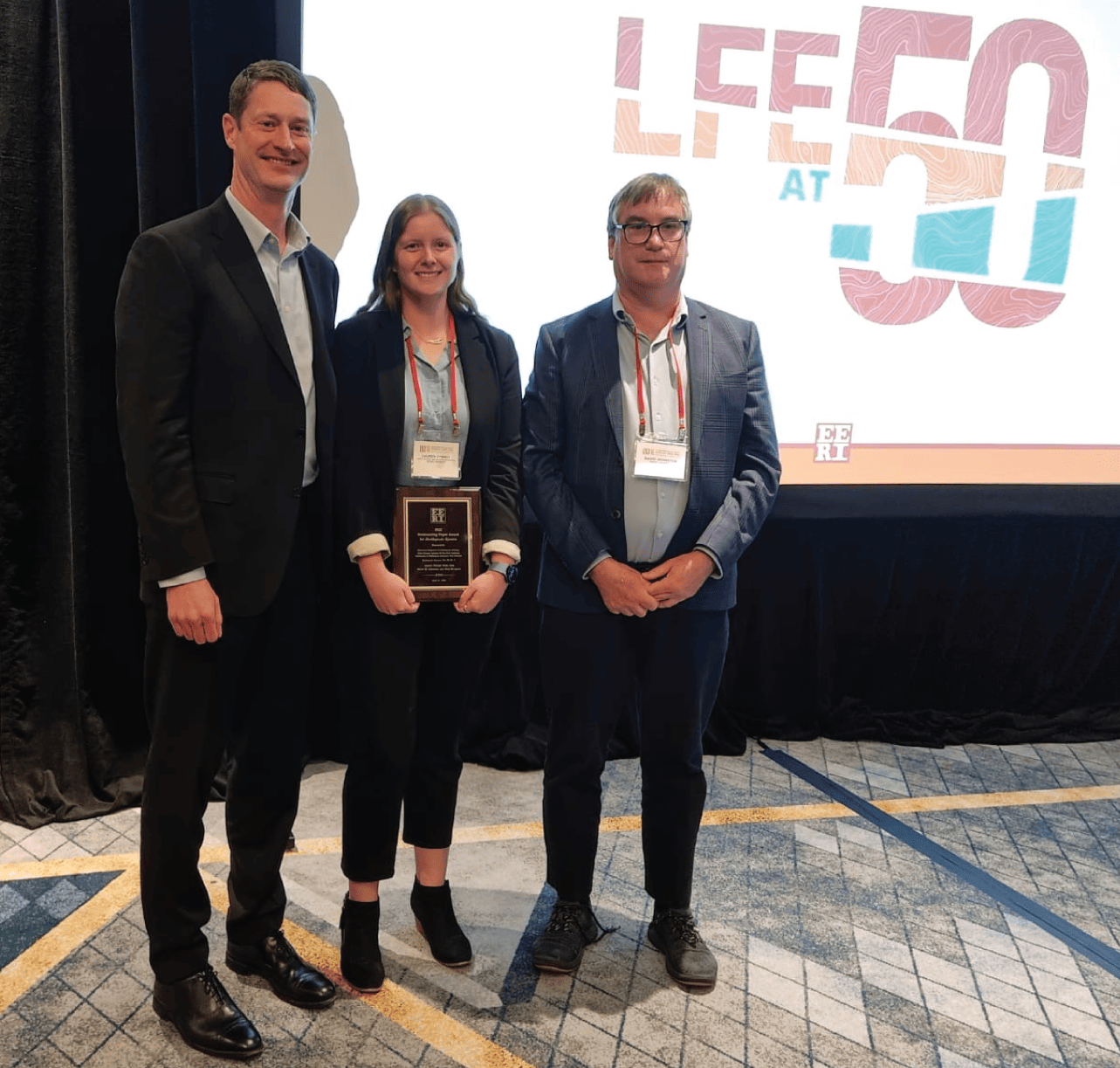
Jack Baker, Editor in Chief of 'Earthquake Spectra' with Lauren Vinnell and David Johnston at the EERI 2023 Annual Meeting.
In the days following the EERI 2023 Annual Meeting Vinnell, Johnston and a colleague from the United States Geological Survey (USGS) are travelling to Redding, California to attend an interagency meeting to build on work with Washington State around their volcano and earthquake hazards.
QuakeCoRE partially funded the research for the initial paper and continues to support the ongoing research underway.


